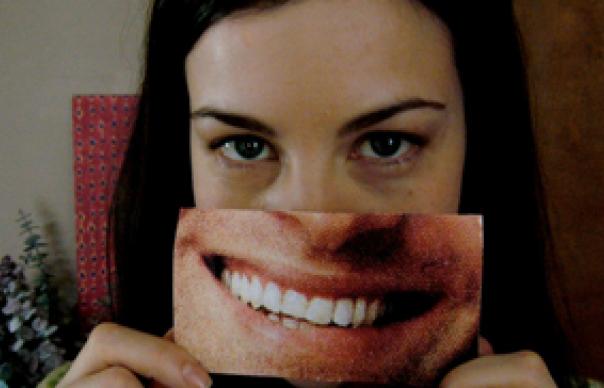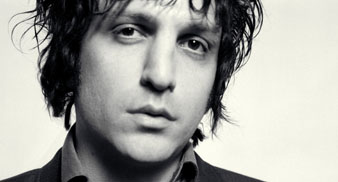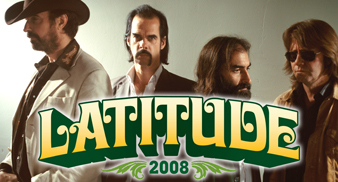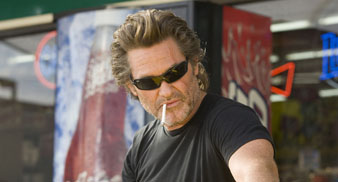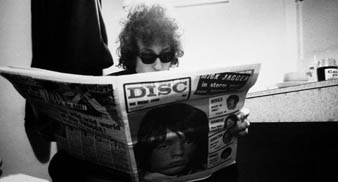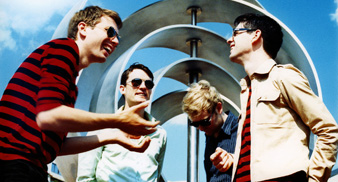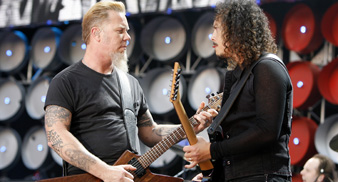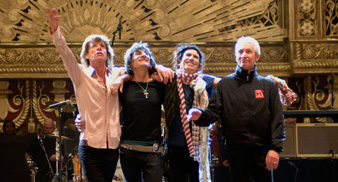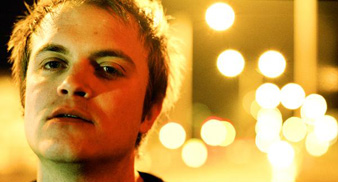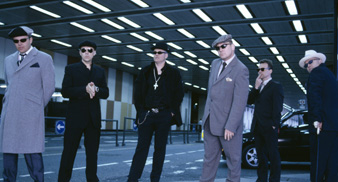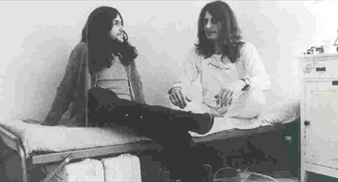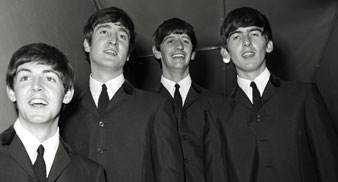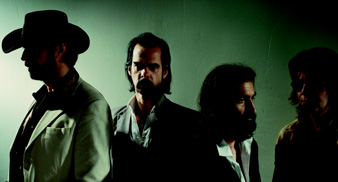Damien Love pays tribute to two icons of Hollywood's Golden Age: Richard Widmark and Jules Dassin.
Sometimes, it can take an outsider to make you really see where you live. Back in 1949, the great British crime movie of the moment was The Blue Lamp, the film in which wise old PC George Dixon of Dock Green says his first soothing “Ev’nin’ all,” and, in the comforting climax, all of London, the cops and the cor blimey criminals alike, come together as one community to stamp out the threat represented by Dirk Bogarde’s delinquent greaser gunman.
The same year that The Blue Lamp was playing in the UK’s movie palaces, however, a gang arrived from Hollywood to make a movie that took one look at Britain and found nothing reassuring here at all. Night And The City it was called – a title that sums up film noir in four words - and it peeled back the skin of London to expose it as a weird, festering warren.
Night And The City has been on my mind recently not only because it is one of the great movies, but because of the deaths of the two men responsible for its greatness: its star, Richard Widmark, who passed away on March 24 at the age of 93; and its director, Jules Dassin, who died one week later, on March 31, aged 96.
A few years ago, in 2002, I had the privilege and pleasure of spending some time talking with Widmark about his career. The great man was 87 then, and, although he had definitively retired from movies a decade earlier, undiminished, and unmistakably still Richard Widmark. “My God,” he laughed, “I still feel like I’m 30 years old, and all of a sudden I’m 87.”
Widmark made his debut in 1947, and the movies never really got over it. The film was Kiss Of Death, and it was supposed to be Victor Mature's picture, but nobody cared about Mature's hero: they watched only for Widmark’s deviant villain, Tommy Udo. This slight, fair, babyfaced fellow whose lips peel back time and again to emit a giggle that sounds like something gurgling up from a drain. Famously, his big scene involves tying an aged invalid into her wheelchair and shoving her down a tenement stairwell, laughing all the while.
It was such an indelible entrance it almost typecast Widmark from the first. 55 years later, he could still joke about his image, such as when I asked him if there were any directors he had wanted to work with, but never had the chance: “Yeah, Hitchcock. Yeah, I fancied myself as Cary Grant.”
As Udo, black shirt, white tie, sharp features framed beneath the brim of a fedora wide as a dustbin lid, Widmark played degeneracy like be-bop. Attractive yet repulsive, guiltless sadism had never been so ecstatically, chillingly presented. Evil for its own pleasure never looked so... tempting.
After Udo, he continued redefining the psycho across several movies, until his first good guy, in Down To The Sea In Ships (1949), suddenly revealed that his smile didn't have to mean murder. From here, he was one of Hollywood’s most dependable leading men.
Even when Widmark was playing the hero, however, mania was never far from the surface. It was that ambiguity which led French film critics Raymond Borde and Etienne Chaumeton to choose his haunted visage to adorn the cover of their seminal Panorama du Film Noir Americain, the 1955 book that gave a name to the uneasy genre. If Robert Mitchum represented noir's soul, Widmark was its face.
Tellingly, the image of Widmark that Borde and Chaumeton picked was a still from Night And The City. And if film noir was an uneasy genre, Jules Dassin had every reason to feel uneasy while he was making that film.
Across the previous three years, Dassin helped lay the foundations of the modern crime movie: Brute Force (1947) was an explosive, jet black, prison picture that lived up to its name, a blunt, brilliant film, containing some of the most shocking and necessary violence the American screen had seen; The Naked City (1948), shot on the streets of Manhattan, pioneered the use of a documentary, verite approach; Thieves Highway (1949) a fantastic, semi-rural noir about revenge, fruit orchards and long-haul trucking managed to show how a film could be hard-boiled and yet lyrical at once.
A long Hollywood career seemed to lie ahead. But just before he left for London to shoot Night And The City, Dassin was called into the office of Darryl F Zanuck, the head of 20th Century Fox, who wanted to give him a warning: this would be his last film for the town.
The Communist-hunting House Un-American Activities Committee had just opened its circus in Hollywood, and fellow director Edward Dmytryk had named Dassin as a Communist, after Dmytryk himself had been named by Elia Kazan, and served time in jail. When filming wrapped on Night And The City, Dassin was forced to flee and seek exile in Europe. He didn’t work for five years, and saw some very hard times; but when he came back, it was with another masterpiece, Rififi (1955), a crime movie set in Paris, featuring a long, silent heist sequence that is still being ripped off to this day. There was another international success with the caper Topkapi in 1962, but, while he found his wife, the Greek actress Melina Mercouri, during exile, Dassin never really had the career his early films should have guaranteed.
Widmark, a committed, lifelong liberal, was friends with Kazan and Dymytryk as well as Dassin and, when I asked him about the HUAC witch-hunt, his voice crackled with an old fury familiar from the screen. “Those idiots. Those men were afflicted with the worst period in American history, a period we should be very ashamed of. It was a terrible time... it was just awful. Eddie was a friend of mine. Kazan was an old friend. We used to do radio together, I knew him from the late ‘30s. He was the best actors' director that was ever around. I had total sympathy with all of them, because I was so against what had happened.”
As it happens, Night And The City is itself about an American in exile in Europe. Widmark plays Harry Fabian, a small-time New York conman stranded on the crime-infected streets of London. A charming betrayer, he makes ends meet by hustling tourists, but he dreams about breaking into the big-time via a bizarre plan to become a wrestling promoter, a scheme that lands him up to his neck in trouble with some obscure Greek immigrants, and finally sees him hunted for his life through the derelict underworld with a price on his head. A hopeless weasel-saint martyred on his ambition, the guy is a louse. But, still, you root for him. The ultimate anti-hero.
“He was a little conman,” Widmark said of Fabian. “Trying to be somebody. Like everybody wants to be. Trying to be somebody, his whole life was devoted to that, so he'd do anything. But there's good about everybody, there's good in even the worst people. And, yeah, he had some good points, too."
The movie was shot only four years after the war, in a London that was still a bombsite, and Dassin, sending his camera burrowing through the wet streets, takes his cues from the ruined landscape. Rather than the town of cheery cheeky chappies and elegant lovers with cut-glass accents that had been familiar from British cinema of the period, he presented a threatening, sweating, burnt-out labyrinth of back alleys, cheap rooms, crumbling drinking dens and greasy waterfront dives, a place filled with the forgotten, the immigrant and the refugee, where people hurt each other and look out only for themselves, teeming with dreams, desire and despair.
In 1992 – just as Widmark retired from films – there was a flat, redundant remake, starring Robert De Niro, which kept the name of Dassin’s movie, but shifted the action back to New York, and lost the fever. If you haven’t seen the original, try to, and don’t be fooled by the De Niro version. With its outsider’s eye revealing the strange, street-level Britain nobody knows, where threat shimmers and violence seems imminent, the film Dassin and Widmark made has much more in common with David Cronenberg’s Eastern Promises. (And far outstrips it, not least by having a proper, unforgettable ending.) Indeed, when Night And The City was released in 1950, there was controversy, as sections of the British press objected to the negative image it painted of the country.
“Well,” Richard Widmark laughed when I asked him about that. “We just photographed it!”
DAMIEN LOVE


